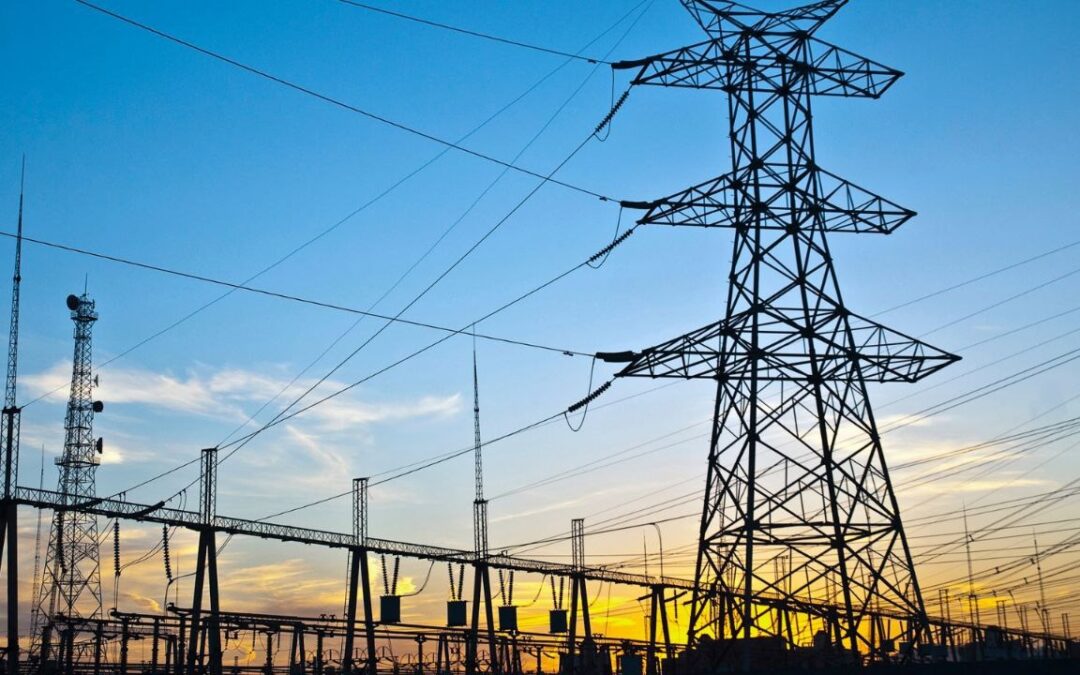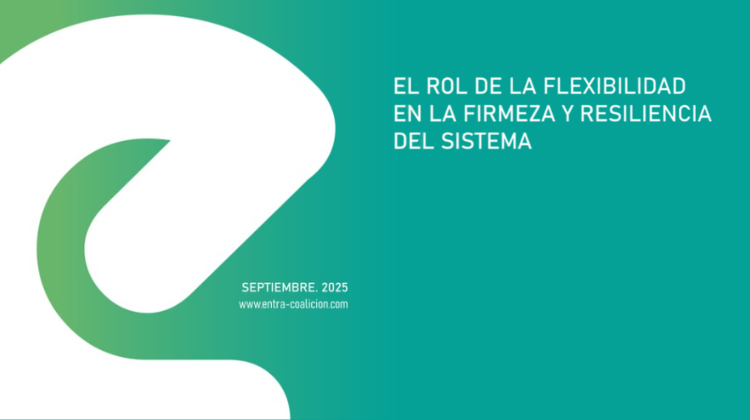The case of green steel in Gijón highlights a broader issue in Spain’s renewable hydrogen initiatives: difficulties in reaching the estimated profitability figures threaten the viability of these strategic projects.


The case of green steel in Gijón highlights a broader issue in Spain’s renewable hydrogen initiatives: difficulties in reaching the estimated profitability figures threaten the viability of these strategic projects.

The Italian renewable market is facing a critical moment with recent regulatory changes. The MACSE system, designed to flexibly manage the electrical grid, and the electricity market reform are key elements in the transition toward a sustainable energy future.

Altea Green Power has set ambitious targets to achieve 5 GW of Battery Energy Storage System (BESS) projects by 2028 and 7 GW by 2030. Currently, the company boasts a robust portfolio in Italy totaling 3.5 GW of renewable energy projects. This includes 700 MW dedicated to wind and photovoltaic energy, with the remaining capacity allocated to storage solutions.

In November, MITECO made progress in the evaluation of 14 renewable projects, with a focus on hybrid proposals and energy storage. Among them, large-scale initiatives stand out, such as the Mequinenza hybrid system (237.6 MW) and the FV Calzadilla photovoltaic plant (114 MW), reflecting the commitment to clean technologies in Spain.

With record renewable generation, clear objectives for 2030, and strong demands from the sector, Sara Aagesen takes on the portfolio with an agenda that prioritizes electrification, decarbonization, and social justice, in line with Teresa Ribera’s legacy.

With 1,238.4 MW in environmental processing published in November, wind energy leads with 596.6 MW, followed by agrivoltaics with 528.8 MW. However, four projects totaling 159.6 MW were rejected in the environmental impact assessment, highlighting the regulatory challenges in the sector.

The country stood out at the latest summit as a leader in renewables and green hydrogen, solidifying its role in the energy transition. However, the event exposed deep geopolitical divisions and the lack of concrete measures to phase out fossil fuels.

The agreement on the carbon market can be a double-edged sword as it was not created under the premise of “the polluter pays.”

The energy storage sector expresses concern about the possibility of not completing installations before the NextGeneration funds must be returned in 2026, following a year-long wait for the final resolution and administrative delays.

A significant portion of the sector has highlighted the technical expertise and continuity that the current Secretary of Energy’s appointment as Third Vice President and Minister will bring with optimism. They also review the key challenges she will need to address: nuclear energy, auctions, tenders, self-consumption regulations, storage, biogases, among others.

The Aragonese manufacturer of comprehensive photovoltaic solutions redefines its approach to support developers and EPC contractors with solutions designed to optimize costs and improve project execution, achieving savings of up to 4% of CAPEX.

The Galician Hydrogen Association (AGH2) faces challenges in permitting, financing, and regulations as it aims to promote hydrogen in industry, mobility, and domestic consumption, with the first implementations planned for 2025.

The Council of State of Italy has provisionally suspended a key provision of the Suitable Areas Decree, limiting the ability of Italian regions to impose stricter regulations. The measure, effective until the hearing in February 2025, creates uncertainty in the development and processing of renewable energy projects. Lawyers analyze the ruling in a conversation with Energía Estratégica España.

The Official State Bulletin (BOE) announces the public information of three renewable projects in Toledo, Seville, and Cuenca. These initiatives combine over 600 MW of installed capacity in photovoltaic solar energy and storage systems.

The excess of renewable generation and the lack of clear policies for energy storage are creating uncertainty in the market. Industry experts highlight the urgent need for regulation to ensure the financial viability of new projects and stabilize prices.

With a budget of 2 billion euros, the upcoming European Hydrogen Bank auction will be crucial for the development of the sector. Experts point out that competitive projects will depend on their maturity, ability to attract consumers, and adaptability to the strict conditions imposed.

According to recent data from Terna, grid connection requests for renewable projects in Italy exceed 300 GW. This phenomenon reflects the pressure of industrial convenience and public planning, notes Alessandro Visalli, who explains that the lack of technical requirements for applications creates virtual grid saturation with a large number of projects unlikely to result in operational plants.

The capacity market promises sustainable income for energy storage in Spain, with its first call scheduled for mid-2025. Luis Marquina, president of AEPIBAL, highlights the key role of Teresa Ribera and the collaborative work between Brussels and Spain to implement this strategic measure.

QAIR Renewables Ibérica and the IREC Foundation lead the processing of three offshore wind farms in Galicia and Catalonia, with a total capacity of 1,758 MW, reinforcing the commitment to energy transition and floating technologies in Spain.

The growing demand for data centers forces Europe to harmonize the digital and energy transition. David Redoli Morchón, from Solaria, highlights how regulations and national planning are key to a competitive and sustainable future.

Combined cycle plants gain prominence: their production increases by 43.5% and they dominate price setting. The cold and calm start to November tests the European energy market, causing a sharp rise in gas and electricity prices for 2025. Forecast for the end of the month: the expected increase in wind generation should moderate prices.

The case of green steel in Gijón highlights a broader issue in Spain’s renewable hydrogen initiatives: difficulties in reaching the estimated profitability figures threaten the viability of these strategic projects.

The Italian renewable market is facing a critical moment with recent regulatory changes. The MACSE system, designed to flexibly manage the electrical grid, and the electricity market reform are key elements in the transition toward a sustainable energy future.

Altea Green Power has set ambitious targets to achieve 5 GW of Battery Energy Storage System (BESS) projects by 2028 and 7 GW by 2030. Currently, the company boasts a robust portfolio in Italy totaling 3.5 GW of renewable energy projects. This includes 700 MW dedicated to wind and photovoltaic energy, with the remaining capacity allocated to storage solutions.

In November, MITECO made progress in the evaluation of 14 renewable projects, with a focus on hybrid proposals and energy storage. Among them, large-scale initiatives stand out, such as the Mequinenza hybrid system (237.6 MW) and the FV Calzadilla photovoltaic plant (114 MW), reflecting the commitment to clean technologies in Spain.

With record renewable generation, clear objectives for 2030, and strong demands from the sector, Sara Aagesen takes on the portfolio with an agenda that prioritizes electrification, decarbonization, and social justice, in line with Teresa Ribera’s legacy.

With 1,238.4 MW in environmental processing published in November, wind energy leads with 596.6 MW, followed by agrivoltaics with 528.8 MW. However, four projects totaling 159.6 MW were rejected in the environmental impact assessment, highlighting the regulatory challenges in the sector.

The country stood out at the latest summit as a leader in renewables and green hydrogen, solidifying its role in the energy transition. However, the event exposed deep geopolitical divisions and the lack of concrete measures to phase out fossil fuels.

The agreement on the carbon market can be a double-edged sword as it was not created under the premise of “the polluter pays.”

The energy storage sector expresses concern about the possibility of not completing installations before the NextGeneration funds must be returned in 2026, following a year-long wait for the final resolution and administrative delays.

A significant portion of the sector has highlighted the technical expertise and continuity that the current Secretary of Energy’s appointment as Third Vice President and Minister will bring with optimism. They also review the key challenges she will need to address: nuclear energy, auctions, tenders, self-consumption regulations, storage, biogases, among others.

The Aragonese manufacturer of comprehensive photovoltaic solutions redefines its approach to support developers and EPC contractors with solutions designed to optimize costs and improve project execution, achieving savings of up to 4% of CAPEX.

The Galician Hydrogen Association (AGH2) faces challenges in permitting, financing, and regulations as it aims to promote hydrogen in industry, mobility, and domestic consumption, with the first implementations planned for 2025.

The Council of State of Italy has provisionally suspended a key provision of the Suitable Areas Decree, limiting the ability of Italian regions to impose stricter regulations. The measure, effective until the hearing in February 2025, creates uncertainty in the development and processing of renewable energy projects. Lawyers analyze the ruling in a conversation with Energía Estratégica España.

The Official State Bulletin (BOE) announces the public information of three renewable projects in Toledo, Seville, and Cuenca. These initiatives combine over 600 MW of installed capacity in photovoltaic solar energy and storage systems.

The excess of renewable generation and the lack of clear policies for energy storage are creating uncertainty in the market. Industry experts highlight the urgent need for regulation to ensure the financial viability of new projects and stabilize prices.

With a budget of 2 billion euros, the upcoming European Hydrogen Bank auction will be crucial for the development of the sector. Experts point out that competitive projects will depend on their maturity, ability to attract consumers, and adaptability to the strict conditions imposed.

According to recent data from Terna, grid connection requests for renewable projects in Italy exceed 300 GW. This phenomenon reflects the pressure of industrial convenience and public planning, notes Alessandro Visalli, who explains that the lack of technical requirements for applications creates virtual grid saturation with a large number of projects unlikely to result in operational plants.

The capacity market promises sustainable income for energy storage in Spain, with its first call scheduled for mid-2025. Luis Marquina, president of AEPIBAL, highlights the key role of Teresa Ribera and the collaborative work between Brussels and Spain to implement this strategic measure.

QAIR Renewables Ibérica and the IREC Foundation lead the processing of three offshore wind farms in Galicia and Catalonia, with a total capacity of 1,758 MW, reinforcing the commitment to energy transition and floating technologies in Spain.

The growing demand for data centers forces Europe to harmonize the digital and energy transition. David Redoli Morchón, from Solaria, highlights how regulations and national planning are key to a competitive and sustainable future.

Combined cycle plants gain prominence: their production increases by 43.5% and they dominate price setting. The cold and calm start to November tests the European energy market, causing a sharp rise in gas and electricity prices for 2025. Forecast for the end of the month: the expected increase in wind generation should moderate prices.

With an associated investment of approximately 13.6 billion, it gives priority to covering the country’s industrial and development needs. The autonomous communities had the opportunity to assess the Proposal last September. Allegations can be submitted until December 16.

Con una inversión asociada de unos 13.600 millones, otorga prioridad a cubrir las necesidades industriales y de desarrollo del país. Las comunidades autónomas han tenido oportunidad de valorar la Propuesta durante el pasado mes de septiembre. Se pueden remitir alegaciones hasta el 16 de diciembre.

A new report reveals that accelerating the opening of balancing service markets and removing barriers that prevent consumer and aggregator participation will strengthen the stability of Spain’s electricity system in a context of high renewable penetration.






